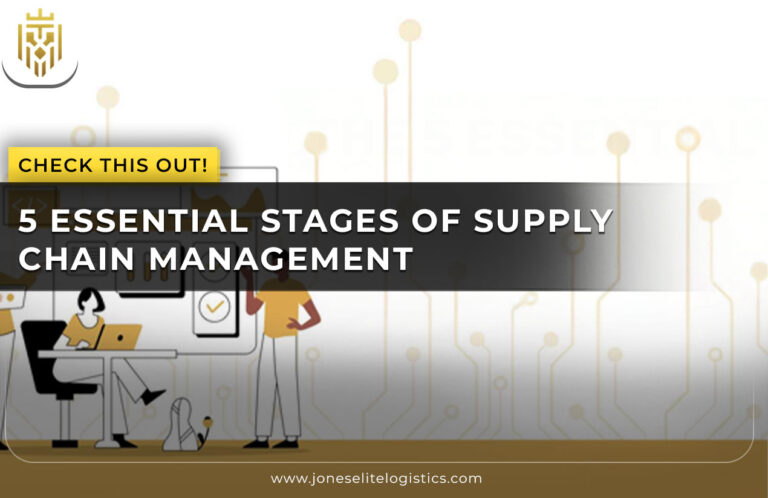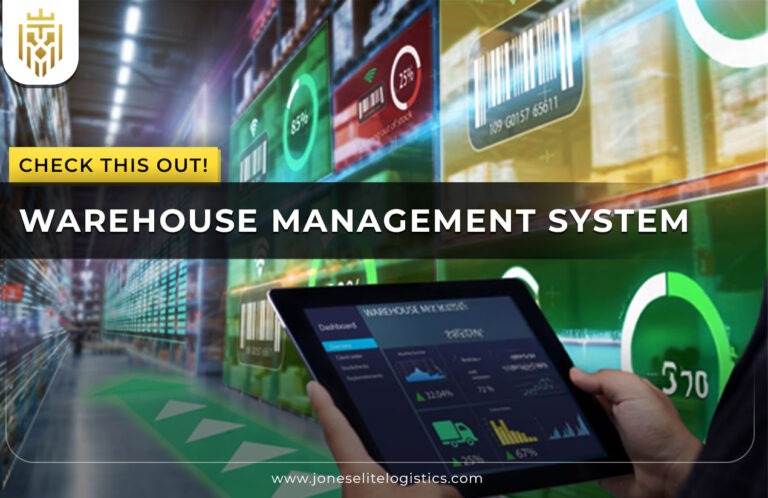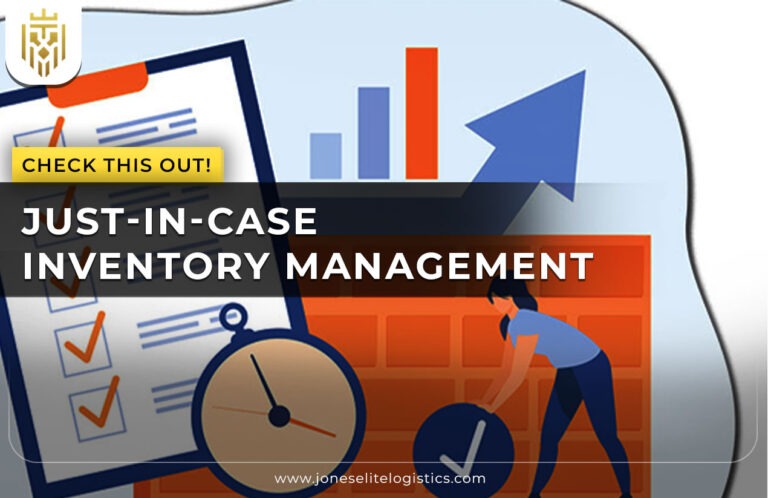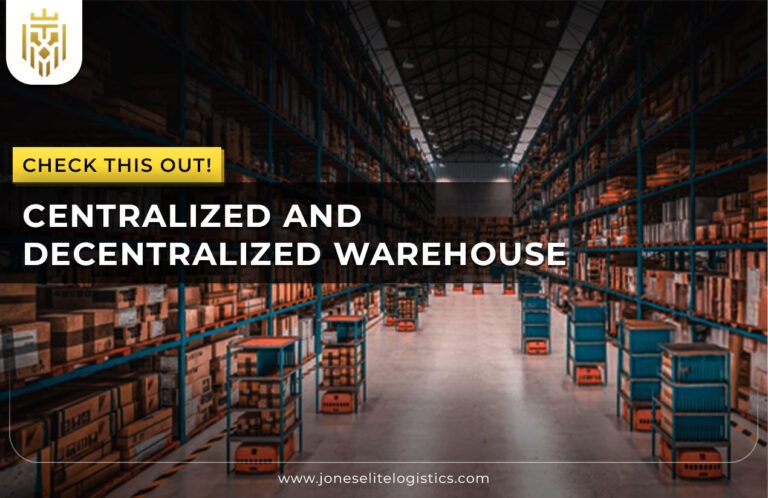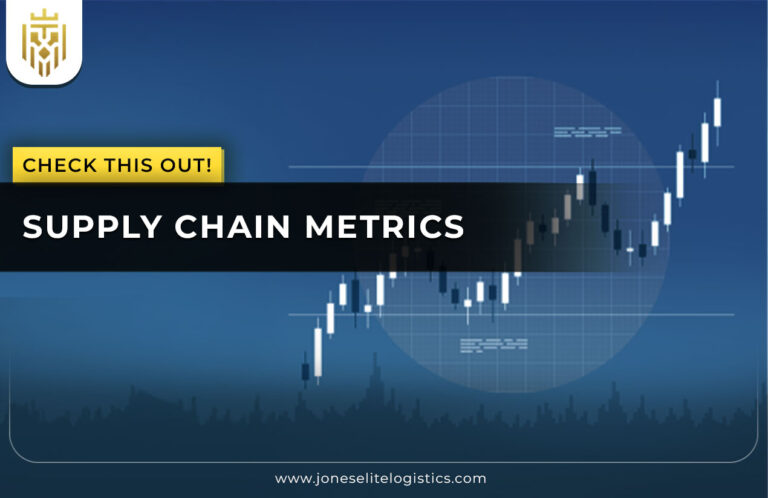Finding Your Way with Vendor Management Systems
Navigating today’s complex supply chains requires a clear understanding of a vendor management system, which helps organisations optimise supplier performance, automate processes, and monitor risks. Businesses that implement such platforms attain improved transparency, lower expenses and better vendor management in competitive environments.
Why Every Organization Needs VMS
Every organisation benefits from structured vendor oversight, as vendor management system software enables streamlined onboarding, payments, and compliance. Whether a small firm or a multinational business, the use of the tools will mean efficiency, accountability, and improved resilience in handling suppliers in various industries and market requirements.
From Spreadsheets to Digital Flow
Movement between spreadsheets and automation changes supplier management. A vendor invoice management system reduces errors, accelerates approval cycles, and centralises records. This shift enables companies to concentrate on strategic partnering with vendors and get rid of the inefficiencies associated with manual recordkeeping and disparate communication channels.
Defining Vendor Management Today
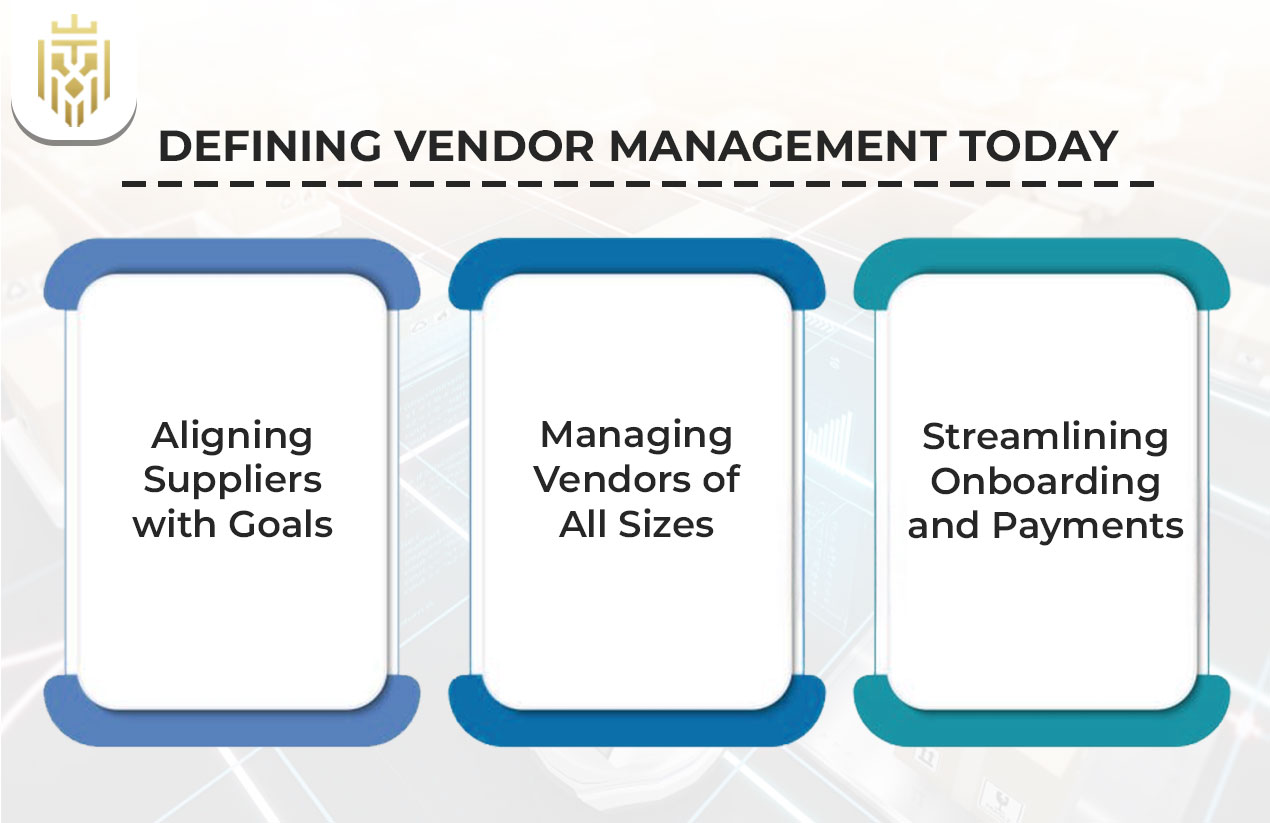
In modern business, understanding the vendor management system’s meaning goes beyond simple supplier tracking. It reflects an integrated strategy to align procurement, compliance, and risk management strategies. By using digital solutions, organisations can gain efficiency and establish better and long-term relationships with different and trusted vendors worldwide.
Aligning Suppliers with Goals
Vendor management in the modern world entails aligning partner cooperation with strategic results. A vendor management system project supports this by integrating performance metrics, risk assessments, and business priorities. This consistency enables vendors to remain a source of growth, competitiveness, and changing sustainability objectives within organisations across industries and geographies.
Managing Vendors of All Sizes
Organisations communicate with freelancers, agencies, and global companies. A scalable vendor management system handles this diversity by tailoring workflows, contracts, and reporting to each vendor type, ensuring consistent quality, streamlined engagement, and strong oversight across all supplier categories in complex operational networks.
Streamlining Onboarding and Payments
Consistency and trust are created through centralisation of boarding, contracts, payments, and monitoring. By leveraging vendor management system software, businesses gain structured workflows that reduce delays, minimise compliance risks, and foster collaboration, ensuring smooth vendor experiences while strengthening governance throughout the entire supplier lifecycle process.
What VMS Brings Forward?
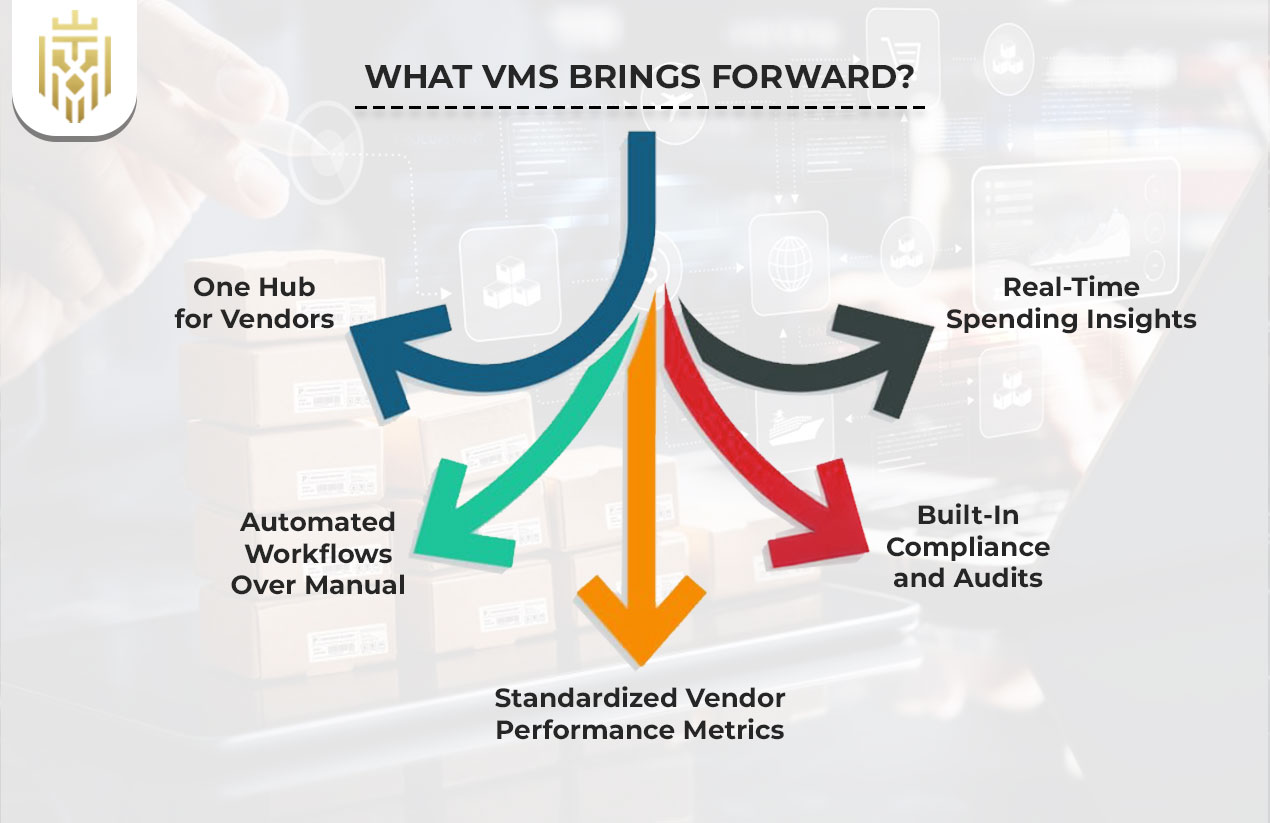
A comprehensive vendor management system integrates the processes of vendor onboarding, compliance tracking, and vendor performance monitoring into a single platform. This eradicates the silos of processes, providing businesses with increased transparency, decision-making, and real-time visibility, ultimately leading to enhanced vendor relationships and enhanced operation
al speed and competitiveness on a global scale.
One Hub for Vendors
Unified platforms revolutionise vendor management by integrating onboarding, risk, and performance assessments into a single platform. A vendor invoice management system works in tandem with procurement and finance departments, leading to prompt payment, compliance, and transparency, limiting disputes and maximising vendor satisfaction and responsibility in supply relationships.
Automated Workflows Over Manual
Automation helps in error reduction and speeding up operations by replacing repetitive tasks. Up-to-date vendor management system software helps organisations avoid manual wastefulness, minimise processing time, and leave teams in a position to concentrate on superior-nexus supplier strategies, allowing them to raise productivity and reinforce collaborative vendor relationships across vast markets with consistency.
Standardized Vendor Performance Metrics
Universal indicators provide businesses with the ability to assess suppliers based on the same metrics, facilitating equal and fair comparisons. Combined with a vendor management system project, these metrics facilitate informed decisions with data, promote accountability on the part of vendors, and facilitate the delivery of constant improvement in the vendor portfolio, ultimately yielding superior results and relationships.
Built-In Compliance and Audits
Technology facilitates compliance and documentation issues. A vendor management programme facilitates audit trails, legal compliance, and real-time tracking, fulfilling industry compliance requirements. This formal control minimises risks, enhances trust, and safeguards companies against expensive mistakes in international supply chains.
Real-Time Spending Insights
Decision-making is improved by the real-time visibility of vendor spending. Knowing the meaning of a vendor management system, in this regard, means that it is a system that helps to combine financial information with everything about the vendors to provide a better understanding that can help organisations of all sizes to avoid overspending, find ways to save and make purchasers smarter.
Real-World VMS Benefits
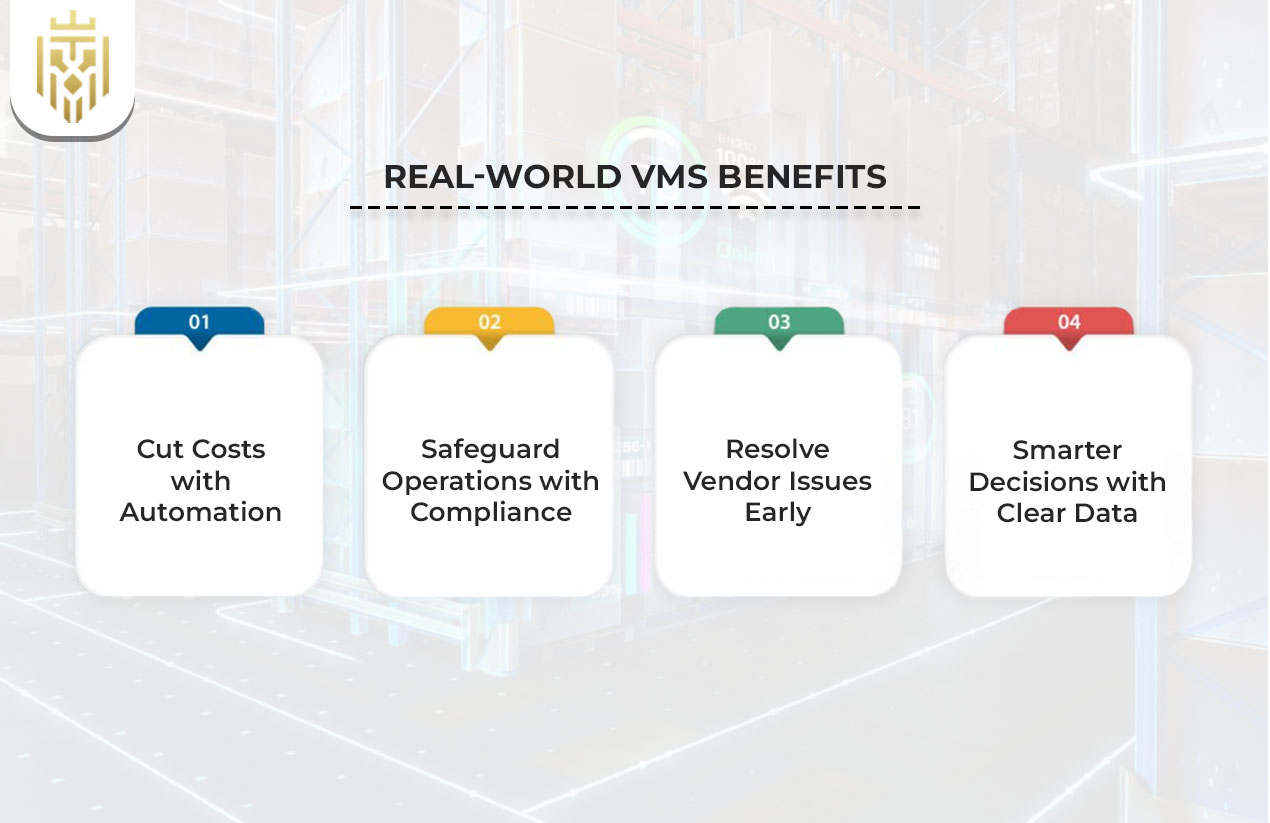
The practical advantages of implementing a vendor management system are cost savings, enhanced compliance, and transparency. By supporting strategic benefits, mitigating vendor risks, and improving decision-making, these platforms become fundamental in adhering to contemporary supply chain challenges and ensuring competitive operational superiority in the global business world.
Cut Costs with Automation
The cost is reduced by automation and simplification of negotiation. Through a vendor invoice management system, companies eradicate bill errors, speed the payment cycle, and enhance financial control to ensure wiser allocation of resources and financial resilience in competitive procurement and supply chain conditions.
Safeguard Operations with Compliance
Risk monitoring and compliance are necessary to protect activities. Vendor management system software offers automated checks, continuous audits and immediate alerts, helping to eliminate disruptions that would cause vulnerability in their businesses and increase trust and accountability in their partnerships with each vendor.
Resolve Vendor Issues Early
Early detection of problems eliminates setbacks in operations. Organisations monitor performance data, raise alerts, and solve disputes with the help of a vendor management system. This preventive strategy helps to build stronger relationships, reduce risks, and maintain business continuity as it keeps the supply chain stable and vendor relationships positive.
Smarter Decisions with Clear Data
Effective, actionable data enables leaders to make sound decisions. A vendor management system project assembles performance, financial, and compliance data and presents it in a consumable format. This openness is faster in decision-making, enhances governance and creates sustainable vendor relationships in industries where time is an essential element of efficiency.
FAQs
1. What exactly does a Vendor Management System do?
A vendor management system streamlines the process of onboarding vendors, paying them, and tracking their compliance and performance with its centralised approach, which also offers transparency, efficiency, and actionable insights to nurture supplier relationships and overall organisational performance.
2. What types of vendors can be managed through a VMS?
Vendor management system software can not only manage freelancers, contractors, small agencies, and global suppliers but also be flexible in coping with divergent vendor relationships while maintaining a sense of consistency, compliance, and performance tracking across industries and supply chains.
3. How does a VMS help reduce vendor-related risk?
A proactive approach to vendor management projects maintains compliance, the financial position, and the performance of organisations. It provides audits, visible documentation, and automated warnings, limiting disturbances and safeguarding businesses against the high prices of operations/regulatory problems.
4. What outcomes do companies see after adopting a VMS?
Businesses that implement a vendor invoice management solution achieve lower expenses, increased speed, enhanced compliance, and increased vendor accountability. The results contribute to informed procurement decision-making, efficiency and sustainable supplier relationships during competition.
5. Is automation the biggest benefit of using a VMS?
Automation in a vendor management system can save time and reduce errors in repetitive manual tasks. Similar long-term effectiveness, however, is also attributed to enhanced vendor understanding, control of compliance, and cost optimisation.

